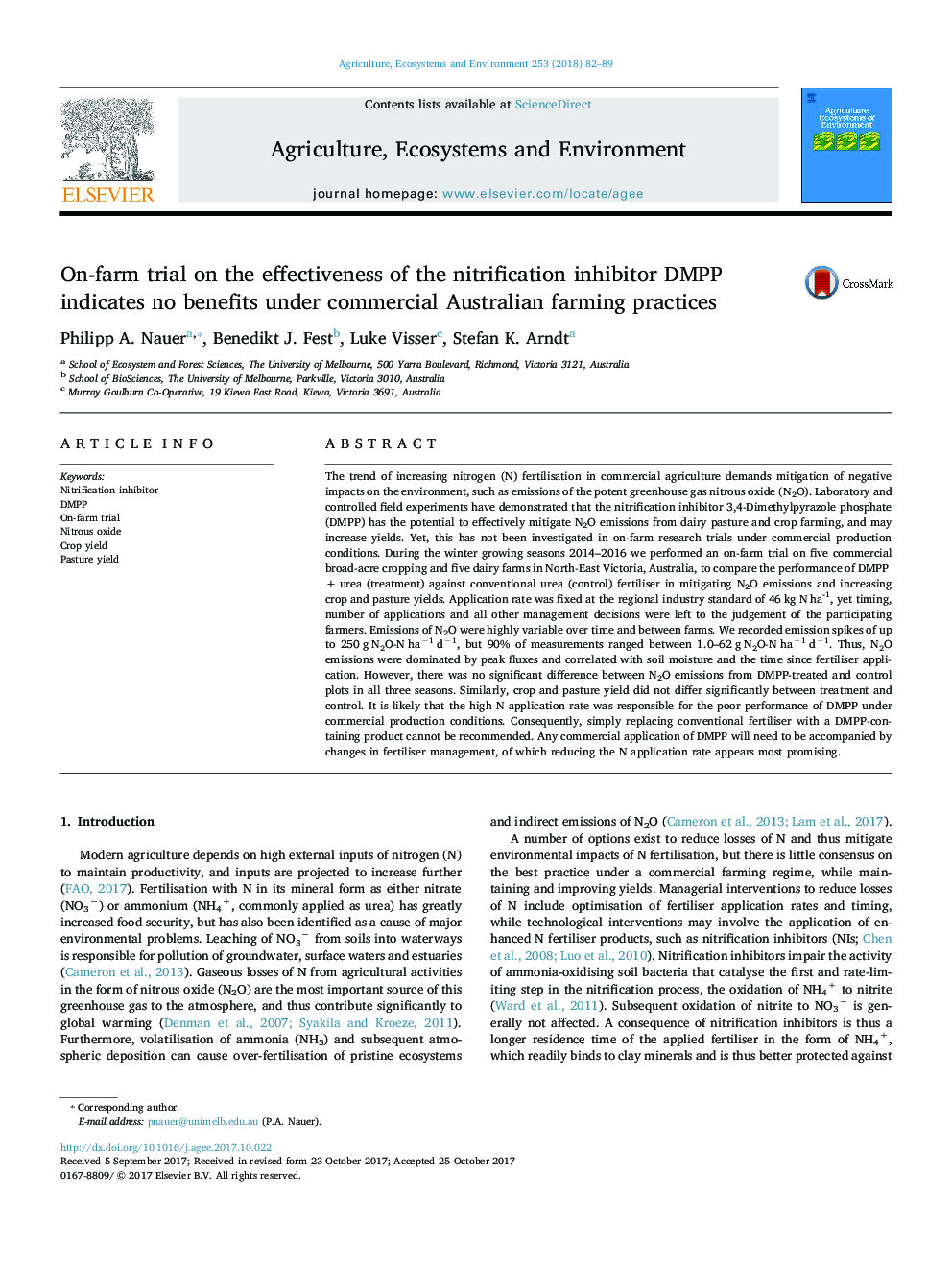| کد مقاله | کد نشریه | سال انتشار | مقاله انگلیسی | نسخه تمام متن |
|---|---|---|---|---|
| 8487234 | 1551999 | 2018 | 8 صفحه PDF | دانلود رایگان |
عنوان انگلیسی مقاله ISI
On-farm trial on the effectiveness of the nitrification inhibitor DMPP indicates no benefits under commercial Australian farming practices
دانلود مقاله + سفارش ترجمه
دانلود مقاله ISI انگلیسی
رایگان برای ایرانیان
کلمات کلیدی
موضوعات مرتبط
علوم زیستی و بیوفناوری
علوم کشاورزی و بیولوژیک
علوم زراعت و اصلاح نباتات
پیش نمایش صفحه اول مقاله

چکیده انگلیسی
The trend of increasing nitrogen (N) fertilisation in commercial agriculture demands mitigation of negative impacts on the environment, such as emissions of the potent greenhouse gas nitrous oxide (N2O). Laboratory and controlled field experiments have demonstrated that the nitrification inhibitor 3,4-Dimethylpyrazole phosphate (DMPP) has the potential to effectively mitigate N2O emissions from dairy pasture and crop farming, and may increase yields. Yet, this has not been investigated in on-farm research trials under commercial production conditions. During the winter growing seasons 2014-2016 we performed an on-farm trial on five commercial broad-acre cropping and five dairy farms in North-East Victoria, Australia, to compare the performance of DMPP + urea (treatment) against conventional urea (control) fertiliser in mitigating N2O emissions and increasing crop and pasture yields. Application rate was fixed at the regional industry standard of 46 kg N haâ1, yet timing, number of applications and all other management decisions were left to the judgement of the participating farmers. Emissions of N2O were highly variable over time and between farms. We recorded emission spikes of up to 250 g N2O-N haâ1 dâ1, but 90% of measurements ranged between 1.0-62 g N2O-N haâ1 dâ1. Thus, N2O emissions were dominated by peak fluxes and correlated with soil moisture and the time since fertiliser application. However, there was no significant difference between N2O emissions from DMPP-treated and control plots in all three seasons. Similarly, crop and pasture yield did not differ significantly between treatment and control. It is likely that the high N application rate was responsible for the poor performance of DMPP under commercial production conditions. Consequently, simply replacing conventional fertiliser with a DMPP-containing product cannot be recommended. Any commercial application of DMPP will need to be accompanied by changes in fertiliser management, of which reducing the N application rate appears most promising.
ناشر
Database: Elsevier - ScienceDirect (ساینس دایرکت)
Journal: Agriculture, Ecosystems & Environment - Volume 253, 1 February 2018, Pages 82-89
Journal: Agriculture, Ecosystems & Environment - Volume 253, 1 February 2018, Pages 82-89
نویسندگان
Philipp A. Nauer, Benedikt J. Fest, Luke Visser, Stefan K. Arndt,